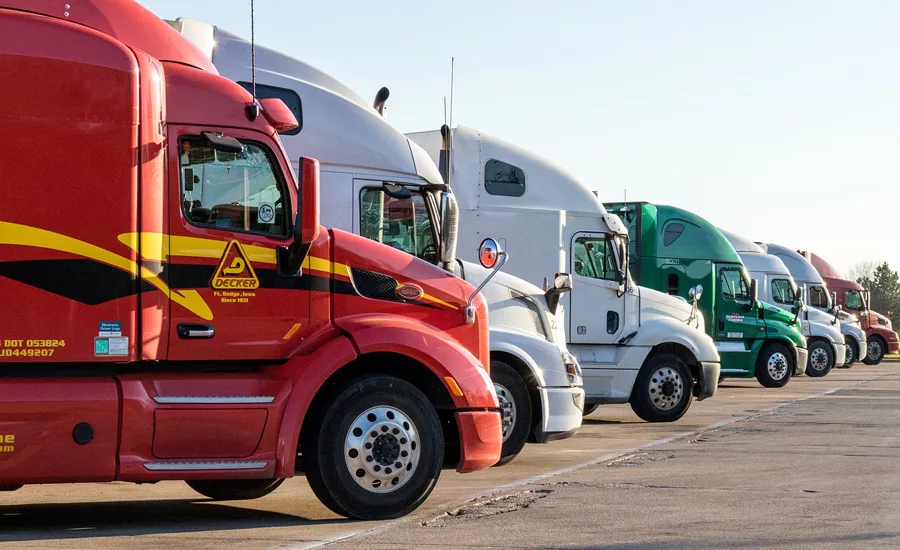Top 10 Beverage Fleet Management Practices
These protocols can help minimize downtime

Day-to-day fleet management is a complicated business and there’s no magic formula that works for all, or even most, operations. However, certain industry-leading best practices can be adapted to just about any size beverage distribution business to help minimize downtime. Here are the Top 10:
1. Pick a good OEM partner, not just a good dealer
This one sounds like a no-brainer, but working with a world-class vehicle dealer is only half the battle. If anything goes wrong, confidence that the original equipment manufacturer (OEM) has your back will be vital.
“We have had great experience with help from Kenworth, Ford and from Eaton with any issues that come up,” says Gary Thompson, executive vice president and general manager at Powers Distributing, Orion, Mich. “The support of the OEM can make all the difference in your fleet. This can literally save you thousands of dollars.”
2. Keep your drivers in the loop
The weekly staff meetings with drivers at Atlas Distributing, Auburn, Mass., focus on more than delivery-related issues. “Any time there is news in the industry or with the company — in any aspect — we are getting in front of our delivery team and making sure they know,” says Brian Lundberg, operations manager at Atlas. “Having that knowledge and level of communication really helps them to feel a part of the bigger picture and generates appreciation amongst the group.”
3. Uncomplicated driver interfaces
User-friendliness should be one of the top boxes to tick when shopping for new equipment. It is especially critical in urban environments. For instance, the delivery managers at Raleigh, N.C.-based Mims Distributing recommend vehicles with push-button, automatic transmission for city driving.
4. Set a schedule for regular equipment refurbishment
Tractors and trailers need to be refurbished about every four years (depending on average miles driven a year, etc.). “We find that if we do not stay in front of refurbishment of the equipment at right about four years, we pay dearly in the upcoming years,” Thompson says.
5. Preventive maintenance is an everyday team effort
A regular preventive maintenance schedule is critical, but everything that happens in between service appointments is just as important. At Mims, drivers are responsible for completing daily truck inspection reports and they’re required to immediately communicate maintenance issues to management. It’s also key to use a single-service provider for maintenance across the entire fleet.
6. Shop around for a good rewards program
When you’re paying for maintenance and more frequent expenses like fuel, you already should be using a fleet card, as it offers fleet managers the type of robust reporting and cost control that credit cards don’t — significantly reducing time and paper work. However, all cards are not created equal, so do your homework to find the one that offers the best member benefits.
7. Computing the driver retention equation
It goes without saying that if you want to attract the best drivers, compensation must be at or above the industry standard for your geographic region. But the benefits must go beyond that if you want to foster staff loyalty. It’s difficult enough to find qualified drivers with clean driving records and CDLs. Mims Distributing offers a reimbursable CDL training program to help recruit and develop staff, and it offers a bonus program specifically structured to incentivize and retain current, top-performing drivers.
8. Support your truck graphics
With the number of new products on the market today, truck-side brand images are changing more frequently than ever before. Treat the exterior of your vehicles as valuable advertising space. “New brands have a shorter ‘half-life,’” Thompson says. “Plan for and use supplier dollars to get fleet graphics done. Do graphics that are either paid, or will last a minimum of five years.”
9. Evolve routing strategies
Time is of the essence at retail locations and the key to spending the least amount of time at accounts is to separate low- and high-volume accounts and route and equip accordingly. High-volume accounts are usually the domain of bulk delivery. Those orders should be picked to pallet and delivered on carts. Save the two-wheeled hand trucks for the low-volume accounts — to be serviced through traditional, 16-bay sideload trailers. Route planning software now is a need-to-have and should be integrated into your fleet operation.
10. Set an equipment replacement schedule
Atlas completely changes out its fleet approximately every seven years. The company leases its equipment, which takes most of the guesswork out of the process for the distributor. But if you own your vehicles, plan to replace them when they approach a similar age. “I know through speaking with others in the industry around me, uptime and service costs are becoming troublesome with older fleets being kept on the road,” Lundberg notes. “Especially with the use of [electronic logging devices] (ELDs), time is far too valuable for delivery fleets. To lose even more time due to service and maintenance issues is not ideal.” BI
Looking for a reprint of this article?
From high-res PDFs to custom plaques, order your copy today!



